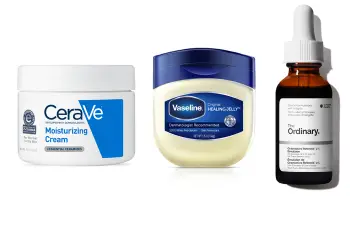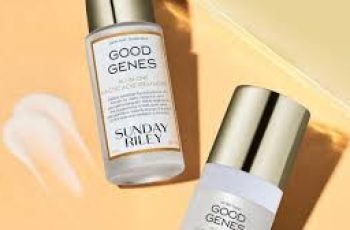
Using skincare acids can sound a little intense. However, **salicylic acid** and **glycolic acid** can do wonders for your skin. You might just want to try them out.
Both are excellent exfoliators. Yet, you might use them for different reasons.
**Glycolic acid** often works best on the skin’s surface. It helps with dryness. It removes dead skin cells. It can also address fine lines. Plus, it enhances your skin’s glow.
**Salicylic acid**, on the other hand, helps clear pores. It reduces oil production. It is also good for treating acne. Some people even use both. They tailor their use to their skin’s specific needs.
Read on to learn more about these acids. We will cover their differences. We will discuss their benefits. We will also explain how to add them to your routine.
### Meet the Skincare Experts
We consulted with top professionals in the field.
* **Lori Aliksanian, MD**, is a board-certified physician. She is also the founder of MedBeautyLA.
* **Dendy Engelman, MD**, is a board-certified cosmetic dermatologist. She practices at Shafer Clinic.
* **Melanie Palm, MD**, is a board-certified dermatologist and cosmetic surgeon. She works at Art of Skin MD.
### What Exactly Is Glycolic Acid?
“Glycolic acid is a type of **alpha hydroxy acid (AHA)**,” says Dr. Melanie Palm. AHAs are a group of natural acids. They come from plants and animals. They are often used for skin issues.
These include acne, dryness, and aging skin.
Dr. Palm explains that our skin cell cycle slows with age. This can cause dead skin cells to build up. This accumulation can make your complexion look dull.
She states that glycolic acid can be applied to exfoliate. It removes these top layers of dead skin. This allows your skin to generate new cells.
Dr. Lori Aliksanian describes **glycolic acid** as a gentle chemical peel. “It brightens the skin,” she says. “It can help remove superficial pigment from sun damage.”
She adds that it can also reduce the appearance of fine lines.
### What Exactly Is Salicylic Acid?
“Salicylic acid is a **beta hydroxy acid (BHA)**,” Dr. Aliksanian explains. “It has been used for over 2,000 years.” Its purpose is to chemically exfoliate the skin.
She notes that topical preparations can be natural. They can come from willow bark. They can also be chemically derived.
Dr. Dendy Engelman adds that it works inside your pores. It sheds the top layer of skin. This prevents pores from becoming clogged.
### Key Benefits and Uses
Both **glycolic acid** and **salicylic acid** offer many benefits.
#### Glycolic Acid Benefits
Glycolic acid has several important benefits:
* **Helps with dryness:** It can eliminate dry, flaky skin. This leaves you with a smoother complexion.
* **Evens and brightens tone:** Its exfoliating properties reduce uneven tone. It also boosts brightness and glow.
* **Reduces fine lines:** Increased cell turnover from glycolic acid can help. Signs of aging, like fine lines, may become less noticeable.
* **Reduces dark spots and hyperpigmentation:** “It can also improve hyperpigmentation and fade dark spots,” says Dr. Engelman.
#### Salicylic Acid Benefits
Salicylic acid also offers many skincare advantages:
* **Clears skin and unclogs pores:** “Salicylic acid is commonly used to gently exfoliate the skin,” says Dr. Engelman. It also unclogs pores and clears out dead cells. It is great for treating acne.
* **Evens tone and texture:** Like glycolic acid, it can reduce fine lines and wrinkles. Dr. Engelman notes it can also have a brightening effect.
* **Regulates oil production:** If you have acne-prone skin, it can help. Dr. Engelman says it can regulate excess sebum production. This improves acne over time and treats breakouts.
### Which Skin Type Should Use Each?
Choosing the right acid depends on your skin type.
#### Glycolic Acid for Your Skin
**Glycolic acid** is a good choice for most skin types. This includes normal, combination, and oily skin. It is usually well-tolerated. However, it can cause irritation for very sensitive skin.
When you first start using it, mild itching or irritation is normal. This happens as your skin adjusts.
“Those with acne-prone or dull skin types are more likely to benefit,” Dr. Palm says. They can incorporate glycolic acid into their routine.
“People with psoriasis, eczema, rosacea, or sensitive skin types may find glycolic acid too irritating,” she warns. She always recommends patch-testing any new product.
Do this before applying it all over your face or body.
#### Salicylic Acid for Your Skin
**Salicylic acid** is generally safe for all skin types. However, it typically works best for oily, acne-prone skin. This is due to its ability to unclog pores. It also balances sebum production.
It helps reduce breakouts.
Salicylic acid can sometimes cause irritation. This is true for very dry or sensitive skin. It can also irritate those prone to eczema, rosacea, or psoriasis.
“Like any other exfoliating product, start slowly,” Dr. Aliksanian advises. Use low concentration preparations. See how your skin tolerates it.
Dr. Palm emphasizes an important point. If you are pregnant or breastfeeding, check with your doctor. Do this before using products with salicylic acid.
### Potential Side Effects and Precautions
It’s important to be aware of possible reactions.
#### Glycolic Acid Side Effects
Common side effects of **glycolic acid** are usually mild. They can include slight irritation, itching, and sensitivity. Typically, these reactions subside after a few uses.
“If you’re experiencing any side effects beyond [this], glycolic acid may not be for you,” Dr. Palm cautions. Always introduce new skincare products slowly. This helps you see how your skin reacts.
“Glycolic is gently stripping off that top layer of dead skin cells,” Dr. Aliksanian explains. “So treat your freshly exfoliated skin gently.” She warns that people using retinol should be cautious. Their skin is already being exfoliated. To avoid irritation, Dr. Engelman suggests alternating use. Use retinol at night and glycolic acid in the morning if you want both.
Sun protection is essential. “Glycolic acid makes your skin more photosensitive,” Dr. Palm states. “So it’s important to diligently apply a sunscreen with an SPF of 30 or above daily.”
Also, avoid direct sunlight if possible.
#### Salicylic Acid Side Effects
Similar to glycolic acid, **salicylic acid** can cause side effects. You might experience dry, irritated, red, or itchy skin. This can happen as your skin adjusts.
Dr. Aliksanian suggests thoroughly moisturizing after a salicylic acid peel. This can minimize these effects.
“If your skin is extremely sensitive, try incorporating salicylic acid with a moisturizer,” Dr. Engelman advises. Or, use a lower concentration. If side effects worsen, contact your dermatologist.
Salicylic acid also increases sun sensitivity. Wear SPF 30 or higher daily, even on cloudy days.
“In addition to diligent SPF application, I wouldn’t recommend applying a salicylic acid treatment more than three times a week,”
Dr. Palm adds. Overuse can cause irritation and compromise your skin barrier. The product type matters, too. Serums and toners may have higher concentrations than cleansers.
Lastly, avoid salicylic acid if you have an aspirin allergy. The acid is in the aspirin family.
### Can You Combine Both Acids?
Generally, **glycolic** and **salicylic acid** are safe to combine. However, pay attention to your skin’s reaction. Do not overdo it.
“If your skin can tolerate it, using glycolic acid and salicylic acid together can be a powerful duo,” Dr. Palm says. This combination can minimize and treat acne. It also exfoliates and reverses dullness.
“That said, keep in mind you’re using two exfoliating properties,” she warns. You may experience more irritation, dryness, and redness than usual.
If you plan to combine them, start slowly. Do not use both acids daily right away. Dr. Palm suggests applying the combination once or twice a week. This allows you to see how your skin reacts.
### The Final Takeaway
Both **glycolic acid** and **salicylic acid** offer impressive benefits. You can even use both in your routine. This is if your skin responds well to each.
Like any product, these acids have potential side effects. It’s best to check with a dermatologist first. This is especially true if you have sensitive skin.
It’s also wise if you have conditions like rosacea and eczema.
Always start slowly. Consult with a doctor if any concerning reactions occur. Generally, both products are safe for a range of skin types. They can make a noticeable difference.
This includes improvements in tone, texture, acne, and anti-aging.
Do you have more questions about which acid might be right for your skin?


